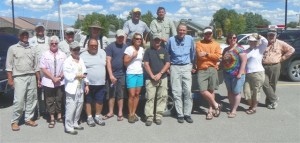Aug
29
STRENGTHENING THE X FACTOR
Filed Under Family, Spouse, Tears of a Warrior | Comments Off on STRENGTHENING THE X FACTOR
by Janet J. Seahorn, Ph.D
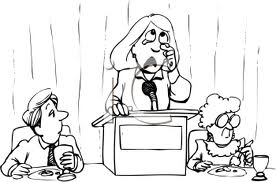
Last week I was honored by being the keynote speaker for the Women’s Luncheon at the annual Nebraska Vietnam Veteran Reunion. It is an interesting phenomenon, keynotes after eating. Most sane societies have a meal then nap for a bit. Yet, in the western world we seem to think people really want and are capable of listening to anything after ingesting a yummy luncheon. Therefore, the challenge of any meal speaker is to entertain while keeping his/her audience awake; a rather formidable task. Added to this test was the seriousness of my topic… talking about the effects of living with a spouse who is suffering with Post Traumatic Stress. Yikes!
Truthfully, this was a wonderful and unique opportunity to be with a large group of women who have endured decades of family and personal events colored by their loved one’s emotional combat trauma. The last thing I wanted was to have people leave the luncheon with more stress and upset stomachs. All of us have had way too much of these frailties. Consequently, I thought the best speech needed to be short, informative, and delivered with humor and solemnity. So here are just a few of the items I believe may be useful to strengthen the next years of these amazing women’s lives.

When I talk about the “X” Factor, it refers to what makes women, women. It is not a coincidence that women have two legs on their chromosomes to stand on versus a man’s one – “Y”. God knew we would need both legs on the “X” to stabilize us on our unforeseeable, earthly journey. Being wives, mothers, sisters… makes us caregivers and caretakers. Trauma from combat both physical and emotional makes this even more evident. “Whether it is our own mothers who stood by us in long-distance torment as we fought on foreign soil, or the mothers of the dead and wounded here as well as in Iraq and Afghanistan, we recognize that most often, it is the women—- mothers/wives… who are left to care for the broken bodies, souls, and societies left in the wake of war.”
Understanding and identifying our own actions may help protect our sanity and bodily health. Here were a few of the behaviors I asked the women to recognize and acknowledge as they interact with their loved one. Think about which of these four DOINGs you use the most:
Doing To: Blaming and Fault Finding
Doing For: Rescuing, Pampering, Becoming like the Bad Behavior
Doing NIL (nothing): Ignoring, Avoiding, Excluding, Rejecting — fuels emotions of shame in the brain
Doing With: Connecting, Clarifying, Restoring
So which category do you fall in most often? Believe me, the first three are quite easy to live in… The Doing With is much trickier to accomplish especially when you are tired, angry, and dealing with your own pain. For this reason I have adopted a powerful quote from St. Francis de Sales. I carry it in my purse. I have it on my kitchen counter, and I pasted it on my bedroom mirror.
“I made a pact with my tongue to never speak when my heart is in distress.”
Some days I am almost mute trying to practice this suggestion.
Aug
22
HEALING REUNIONS
Filed Under Events, Healing, Life, PTSD, Tears of a Warrior | Comments Off on HEALING REUNIONS
by Tony & Janet Seahorn
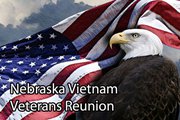
The corn is high, tasseled and almost ready to cut. Traveling through Nebraska we pass miles and miles of these tall stalks waving in the wind and looking like a legion of green sentries welcoming visitors. For the second year in a row we are returning to the Nebraska Vietnam Veteran Annual Reunion as guest speakers. It is the twenty-seventh year the gathering has been held and the attendees grow each time. Every person is welcomed… veterans, spouses, family members, and friends. Besides Nebraska, they travel from South Dakota, Kansas, Wyoming, and Colorado.

These reunions are not just reminiscing about the vet’s combat experience. They are more on being with others who have traveled a familiar road, have endured a similar past, and have formed new friendships, gained new understandings of their war events, and lived a life of service to their families and communities. The days are filled with celebrations of being – being with old buddies and new friends, being with other spouses to laugh and cry, and being in their beloved state to appreciate that this land is exactly what they fought, died, and suffered for decades earlier. Since they had no parades or welcoming ceremonies when they returned from Vietnam, they created their own event commemorating their service.
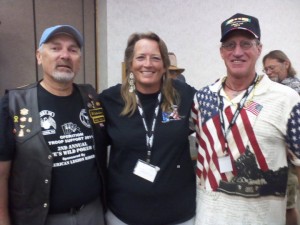 Hanging around over four hundred veterans and their families, one observes and learns many lessons and here are just a few:
Hanging around over four hundred veterans and their families, one observes and learns many lessons and here are just a few:
- 1. There really is healing in numbers.
- 2. One does not have to do the journey after combat alone. He/she has a huge posse to support the trip.
- If one person falls, there are many who care enough to pick him up, brush him off, and kick him in the butt to keep going.
- The pain and memories of combat may never go away but these memories/pain do not have to consume the entire life of the individual. Each person must make the choice to move forward in spite of their wounds.
- There is still joy in living each day.
- Laughter (and food) really is the best medicine.
- A good sense of humor gets you through a lot of grief.
And last, this special quote that we used during our workshop to support each vet and their family’s continued healing.
“The key thing to get inside the head of a PTSD suffering vet is this: If one of your buddies was lying wounded on the battlefield, you’d carry him to safety at all costs, right? Well this time, the vet wounded in his soul is the guy in the mirror, AND IT’S YOUR DUTY to carry this one more vet to help. He’s hurting because he’s a human that’s gone through an inhuman experience. Your buddies who didn’t make it back want one thing only – for one of you to make it, namely YOU. Your victory is saving that vet in the mirror, helping him forgive himself for being only human ( Roland Van Deusen).”
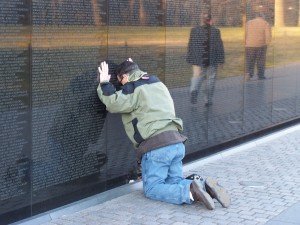
Aug
15
LUMPY GRAVY
Filed Under Life, Lumpy Gravy, Tears of a Warrior | Comments Off on LUMPY GRAVY
by Janet J. Seahorn, Ph.D
 Have you ever thought about lumpy gravy? Surely you’ve seen it, maybe even had to eat some of it. Most of us prefer our gravy to be smooth and thick, rich with the juices of the meat. So what has Lumpy Gravy got to do with PTSD? Everything! It is a pretty accurate metaphor of life and living with PTSD both as the sufferer and those closest to the pot.
Have you ever thought about lumpy gravy? Surely you’ve seen it, maybe even had to eat some of it. Most of us prefer our gravy to be smooth and thick, rich with the juices of the meat. So what has Lumpy Gravy got to do with PTSD? Everything! It is a pretty accurate metaphor of life and living with PTSD both as the sufferer and those closest to the pot.
Last night I got to thinking a lot about “Lumpy Gravy”. It all came about as Tony and I were making a turkey dinner for a friend recovering from ankle surgery. We were taking dinner over to him when we came into the dangerous territory of the Lumpy Gravy fiend. I had asked Tony to make the gravy for the meal. Unbeknownst to me, Tony had a very specific way in which he insisted on making HIS gravy. This entailed carefully putting in a handful of flour into the left over juices and stirring it until it was brown with a smooth texture before adding the extra water or milk to the mixture. However, I made the dastardly mistake of having too much liquid in the mixture. The only way to thicken with flour was to put it in a small jar filled with a bit of water, shake rigorously, and then add this concoction to the turkey drippings. As you may have now guessed, this was not the prescribed procedure. Tony responded by dumping a scoop of flour directly into the hot turkey drippings. Walla, BIG, white lumps of flour now floated proudly on top of the mixture almost taunting him saying, “You really messed this one up mister”.
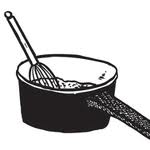
Not a big deal to the normal gravy maker. But to Tony this was not acceptable. Seeing those lumpy, white, floating sprites of flour on top of the gravy was another clever way of the PTSD troll to appear. The remainder of the evening was consumed with hashing over the problem of who, why, what, and how we now had to endure “Lumpy Gravy”.
It sounds ridiculous to most people, even a bit hilarious. Something you might view on a TV sitcom. Yet, spending the evening with the “Lumpy Gravy” demon was not entertaining or fun. It was another darn opportunity to practice patience and understanding, which can wear quite thin on some days. After settling my own temper and trying desperately to hold my tongue, which is not easy or consistently successful, I remembered what Dr. Haug, (Tony’s VA therapist) had explained to me. Tony’s behavior wasn’t about “Lumpy Gravy” at all. It was about the need to do things right, to be accurate, to be correct in the operating procedure. If one was careless and procedures weren’t followed, the operation could be in peril. As trivial as it may seem, “Lumpy Gravy” was a failure in procedure.
So what does “Lumpy Gravy” have to do with Life or PTSD? It is a metaphor of living. Enjoying smooth days that offer a richness of texture and seasoning without too many major LUMPS.
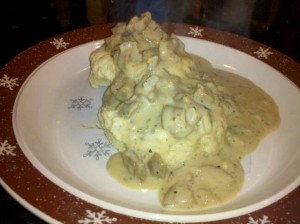
When lumps do appear in a vat of hot gravy it is nearly impossible to whisk them away no matter how vigorously we might attack the mixture. About the best we can do is to remove as many lumps as possible and hope that the gravy is still consumable. Most important is to learn the lesson of what created that “Lumpy Gravy” and try to prevent inviting the demon to dinner too often.
Next time, I am opting to buy my gravy mixture in a jar, already prepared so all that is needed is to heat it in the micro. Bon appetite you “Lumpy Gravy” demon.
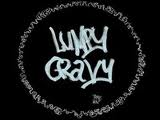
Aug
2
RIVER FISHING – GREAT THERAPY
Filed Under Combat PTSD, Events, Fishing Therapy, Healing, Healing Waters, Peace, PTSD treatment, Tears of a Warrior, Veterans | Comments Off on RIVER FISHING – GREAT THERAPY
by Janet J. Seahorn, Ph.D

There are few things in life that can take your mind off trouble more than a special day on a beautiful river. Last week the Platte Valley Trout Unlimited Chapter located in Saratoga, Wyoming had the opportunity to take a group of wounded veterans from the Cheyenne VA Medical Center on just such a trip. The excursion began with an amazing barbecue put on by members of the chapter and local volunteers. It seemed like almost everyone in the community wanted to contribute something from ice cream to napkins. Children from 4-H served food, helped clean up, and simply added their youthful energy to the evening.
The next morning began early with breakfast which proved there is nothing wrong with a warrior’s appetite. Then off to the river, which is a logistical bussle of shuttling boats, equipment and people to one of the river’s launch site. Vice-President and project coordinator of the Trout Unlimited Chapter, Steve Hays, was a bundle of nerves as he wanted to make sure every detail of this event went perfectly. Again, all the shuttle drivers, helpers, boats, and guides donated their time and efforts to making the fishing trip an amazing experience.
The guardian angels of fishing trips could not have arranged a more beautiful day for a float. The water was dazzling with light, birds seemed to have arranged their chorus of unique songs for entertainment, and even the fish were cooperative. Private angling lessons were given throughout the day which proved to be quite successful for most of the veterans. Two warriors demonstrated their angling abilities by catching ten or more fish. Since the North Platte River has been running at flood stage since mid-May, having the water and its inhabitants somewhat normal was a real gift.
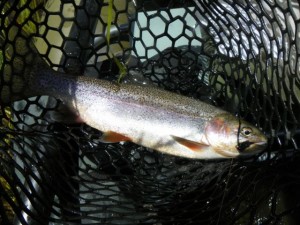
Yet, the most significant result of the float trip was its therapeutic benefits to the wounded warriors. Most of the group had not known each other before the overnight trip. What they found from these precious, short twenty-four hours is recorded in their comments below:
- I can’t believe people care that much about us.
- I had no idea other veterans continue to struggle with PTSD; I thought I was just weak.
- I really needed this… it’s been a long time since I felt I could relax and feel safe.
- The whole experience has been a true blessing.
- This is what makes healing happen.
- That was one of the best days of my life.
Formal therapy can and is very helpful to many military individuals healing from the trauma of combat. But it is only one ingredient of the recipe. Being with others who have suffered similar wounds, knowing that others care and appreciate their sacrifices and experiencing the beauty and serenity of nature offers one a sense of peace, safety, and the faith that perhaps some divine presence may truly be keeping watch over them.

Yep, Fishing Therapy… the new, ground-breaking, effective line of defense against the scars of war.
